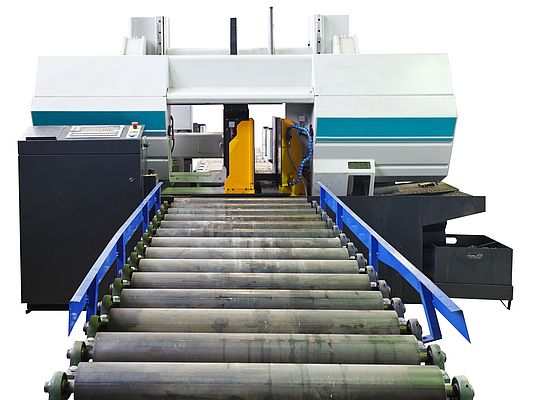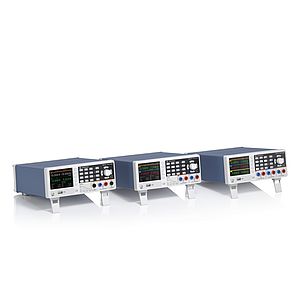UCIMU - SISTEMI PER PRODURRE declares that 2015 is closing very positively for the Italian machine tool industry, which is registering double-figure increases for almost all main economic indicators. The expectations for 2016 are also positive, as the favourable trend should continue.
This is the scenario described this morning by the President, Luigi Galdabini, on the occasion of the year-end press conference of UCIMU-SISTEMI PER PRODURRE.
On the basis of the preliminary figures processed by the Studies Dept. of UCIMU SISTEMI PER PRODURRE, in 2015, production grew to 5,430 million euro, registering a 12.2% rise versus the previous year.
This outcome was due to the positive trend of exports and of manufacturers' deliveries in the Italian market, as a testimony to the recovery of investments already started in 2014.
A really remarkable growth was reported in the Italian machine tool consumption, reaching 3,595 million euro, thus marking a 31.3% increase compared with the previous year. The reawakening in the demand for production systems rewarded both the manufacturers' deliveries, grown to 1,920 million euro, i.e. 21% more in comparison with the previous year, and imports increased by 45.5%, to 1,675 million.
After the setback suffered last year, in 2015 exports started to grow again strongly, recording a 7.9% upturn, at 3,510 million euro.
According to UCIMU processing on the ISTAT data, in the first eight months of the year (last available survey), the main destination countries of the sector "Made in Italy" turned out to be: the United States 248 million (+10.8%), China 232 million (+0.5%), Germany 227 million (+7.1%), Russia 133 million (+38.1%), France 114 million (+23,5%), Poland 77 million (+21.3%), the United Kingdom 77 million (+88.2%), Turkey 63 million (-15%), Spain 61 million (+12.1%), India 57 million (-0.3%).
The upswing of the domestic market has inevitably drawn the attention of the Italian enterprises that directed a part of their resources, previously lavished abroad, to their national territory. This is proved by the export/production ratio, decreased only to 64.6% over two years (versus 75.4% in 2013).
Even 2016 will be a favourable year for the Italian industry of the sector, which, according to the forecasts, will experience a growth for all main economic indicators.
Production will achieve 5,820 million euro (+7.2%), getting close to the "record" value of 6 billion euro registered in 2008.
Exports will grow by 6.6%, to 3,740 million. The positive trend of consumption will also continue: expected to grow by 8.8%, it will reach 3,910 million euro, driving both the manufacturers' deliveries,- likely to attain 2,080 million euro (+8.3%) - and imports, expected to reach 1,830 million (+9.3%).
Luigi Galdabini, President of UCIMU-SISTEMI PER PRODURRE, commented: "2015 was a positive year for the Italian machine tool industry that was able to take full advantage of the consumption recovery and of the improvement with regard to the national and international situation, recording increases for all main indicators. However, EMO MILANO 2015, on one hand, and the measures of industrial policy provided for by the Government authorities, on the other hand, further boosted this recovery by making it stronger and more stable".
In this connection - continued Galdabini - we warmly welcome the provision of super depreciation, included in the Stability Law and requested to the authorities precisely on the occasion of EMO MILANO 2015. This provision allows 140% depreciation on the value of purchased machinery. However, we ask for an amendment to the provision text, which is currently under discussion: this provision should be applied to all "ordered" machines (and not to the "delivered" machines as in the current text), within 31 December 2016 and delivered within 30 June 2017. To guarantee the correctness of operations, it should be established - explains Luigi Galdabini - that the order is accompanied by tracked down payment or by a payment in financial lease for at least 20% of the investment value".
"With this proposal - went on Galdabini - the benefit deriving from the provision would be equally distributed between manufacturers and importers. Currently, at least in the final phase, the measure favours importers and distributors, - who supply goods ready for delivery - more than the Italian SMEs. Actually, the small and medium-sized enterprises usually work on order and with highly customized products, whose production generally takes several months to complete".
"This said, however it is necessary to point out again the need for specific measures capable of supporting, in a structured way, the relaunch of the domestic market and of the Italian manufacturing sector that is often working with obsolete production systems so far. A complementary action to the super depreciation and to the New Sabatini Law, already refinanced for the whole year 2016, should be the revision of calculation coefficients for depreciation, dating back to 1988".
"On the other hand - concluded Galdabini - the recovery of machine tool consumption in Italy is an issue of great interest not only for manufacturers, but indeed it is and must always be among the priorities of our country, whose manufacturing industry is operating with more and more obsolete and less efficient production technologies. To avoid a loss in competitiveness in our country system, it is necessary to contemplate an incentive programme to support the replacement of obsolete machinery. The provision, which was favourably considered by Vice-Minister Calenda, could actually give a shake to machinery consumption, but most of all it would encourage the necessary modernisation of production plants, in response to the enterprises' requirements of higher productivity and of compliance with the stricter and stricter regulations in terms of energy saving and improvement of safety standards at the workplace".






















































